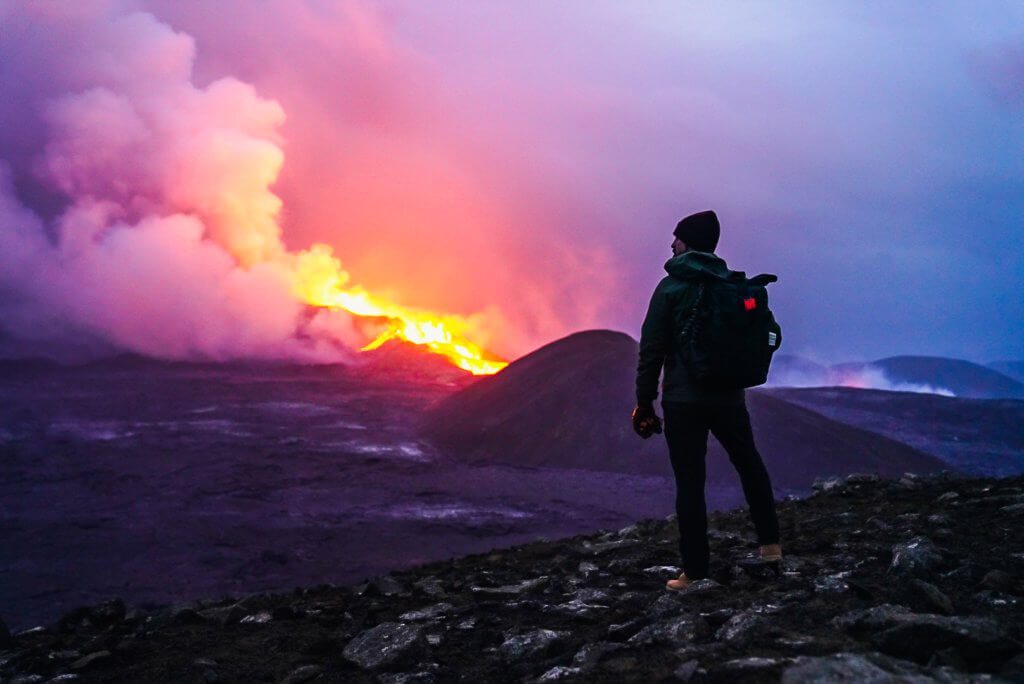
Iceland’s Fagradalsfjall Volcano is erupting right now! Iceland is known as the land of fire and ice for good reason. Around 60 million years ago, a fissure in the earth’s surface opened up, causing a split between the North American and Eurasian tectonic plates. As these plates spread apart, massive amounts of lava spewed out, laying the foundation for what we now know as Iceland.
Even though molten hot lava is responsible for forming the island nation, Iceland boasts more than its fair share of snow, ice, and even glaciers. Just before going to the volcano, I went scuba diving in the frigid waters of Silfra, between the North American and Eurasian tectonic plates. After the dive, I felt like a human popsicle. I needed to feel some heat. I had experienced the ice, now it was time for the fire. I was heading straight to Mount Fagradalsfjall Volcano.
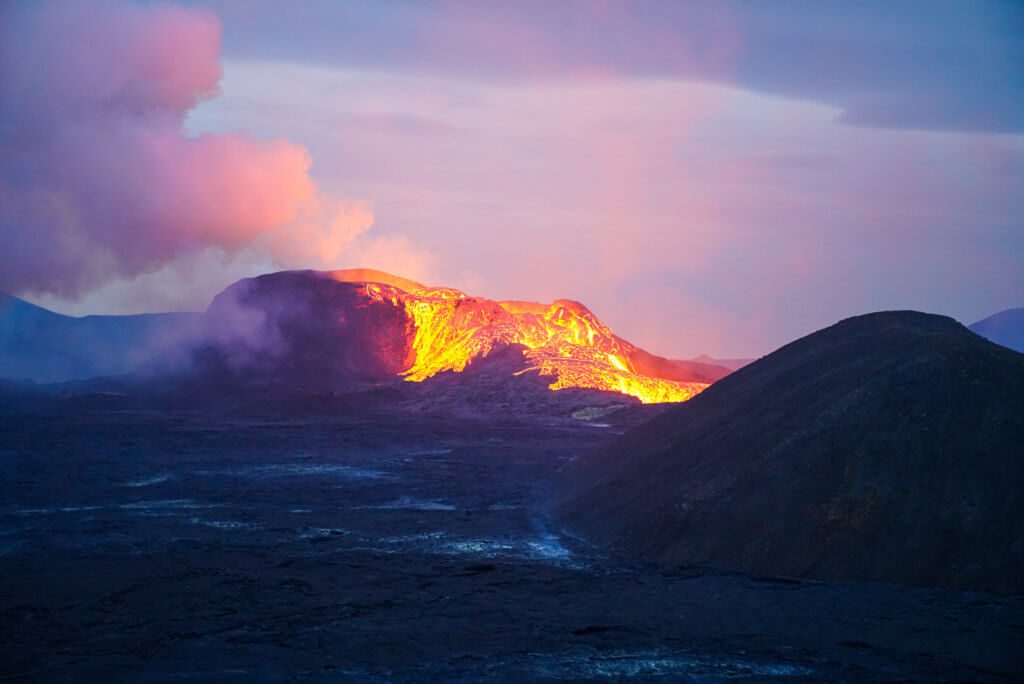
Fagradalsfjall Volcano
Situated on the Reykjanes Peninsula, about 40 kilometers from Reykjavik, stands Fagradalsfjall Volcano. After 800 years of dormancy, the volcano began erupting on March 19, 2021. As of today, lava is still actively spewing.
Fagradalsfjall Volcano is currently showing off new lava fountaining episodes at roughly 10-minute intervals. The lava can shoot several hundred meters into the air, and each episode lasts for about 2 minutes.
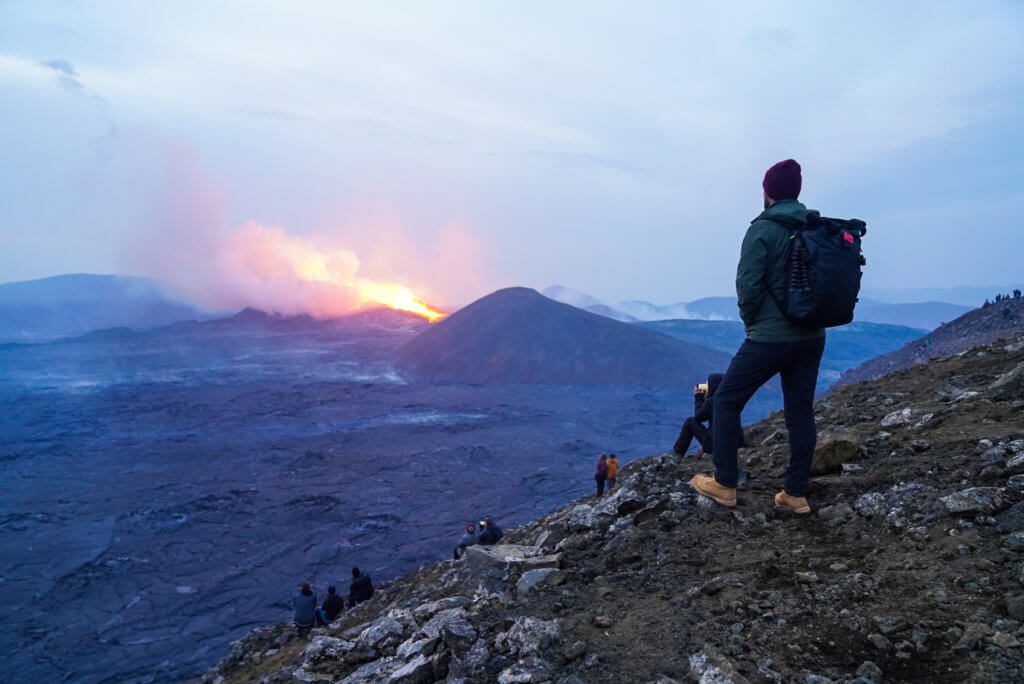
What Was It Like To Be There?
In a word – unreal. The first time I saw the volcano erupt, my jaw dropped, and my eyes grew as wide as dinner plates. Every eruption is different from the last, and the views are constantly changing. The weather and time of day vary slightly, and the whole volcano looks brand new. The cloudier it gets, the brighter the skies around the volcano glow in dramatic hues of pink and orange.
The ever-changing lava flow and field will affect your visit as well. As I landed in Boston on my flight from Reykjavik, another passenger told me the path we took had just been closed due to lava overtaking a section of the trail. Visiting Fagradalsfjall Volcano was a major bucket list item I got to put a big checkmark next to, so I’m glad I was able to get as close to the cone as I did.
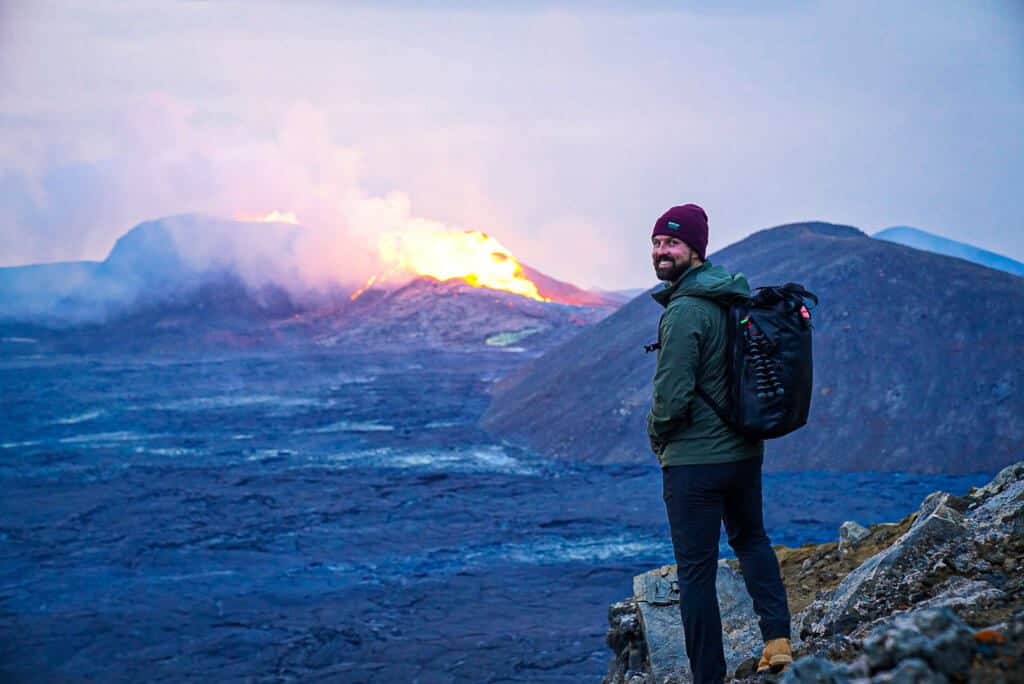
As I was visiting during the summer months, Iceland was experiencing the midnight sun, which means that it never gets dark! The sunset was around 1:30 am and rose again just a couple of hours later. The sky was always light, looking more like dusk than dark when the clouds rolled in well after midnight. I was only planning on staying for an hour or two, and before I knew it, my watch read 4 am! I knew I needed to start making my way out of there, but it was just hard to leave such an unbelievable sight.
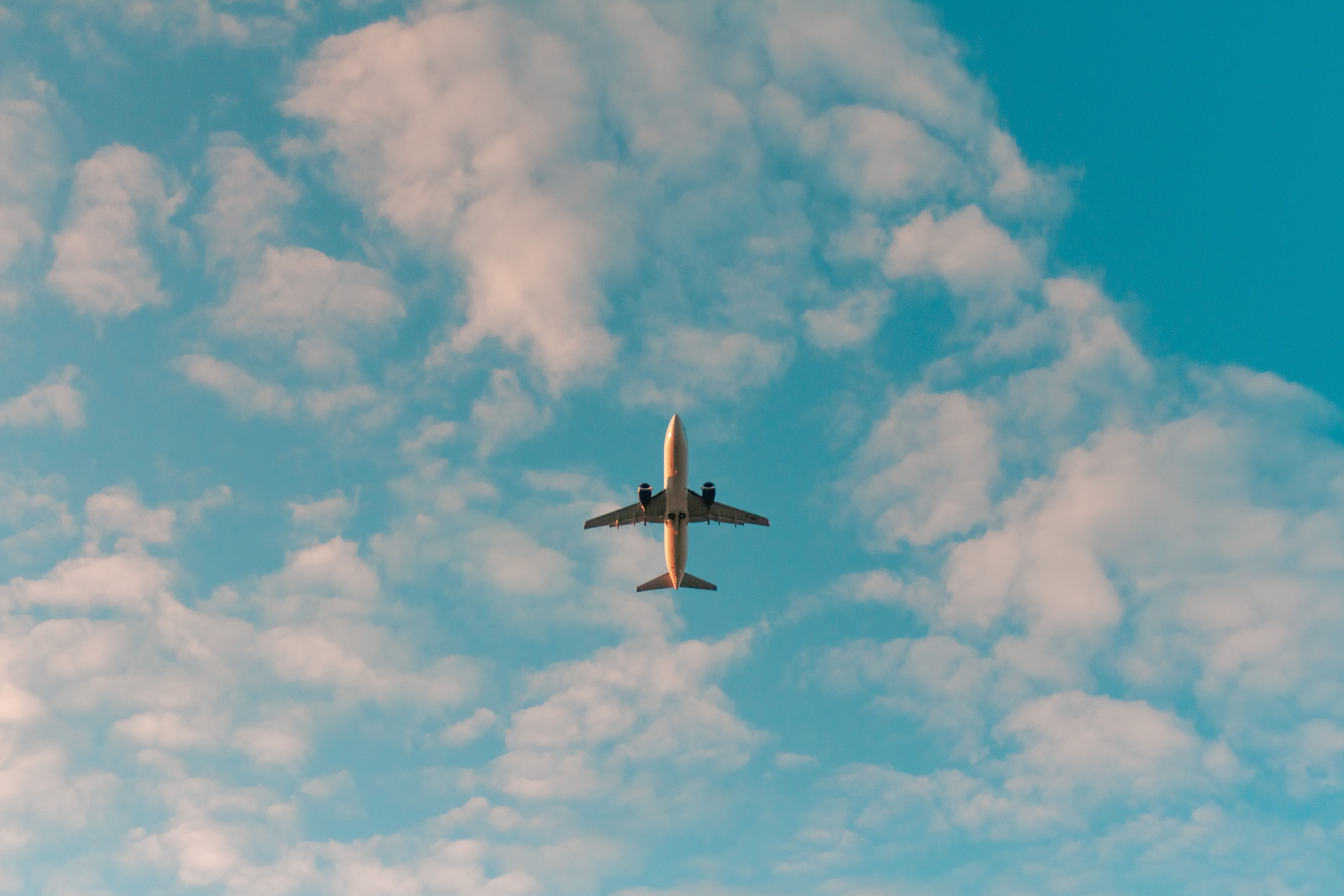
Get My Top 5 Pro Tips For Beating Jetlag
Have a long flight coming up? Click below to ensure you have a Smooth Trip.
The Conditions
During my hike to the viewpoint, the sun was out, and the weather was warm. Over the next several hours, I experienced clear skies, clouds, wind, and rain. I began to sweat and had to shed a few layers on the hike to the viewpoint. However, when the wind and rains picked up, I couldn’t get those layers back on fast enough. Icelandic weather is famously unpredictable, so be prepared for anything and everything during your visit.
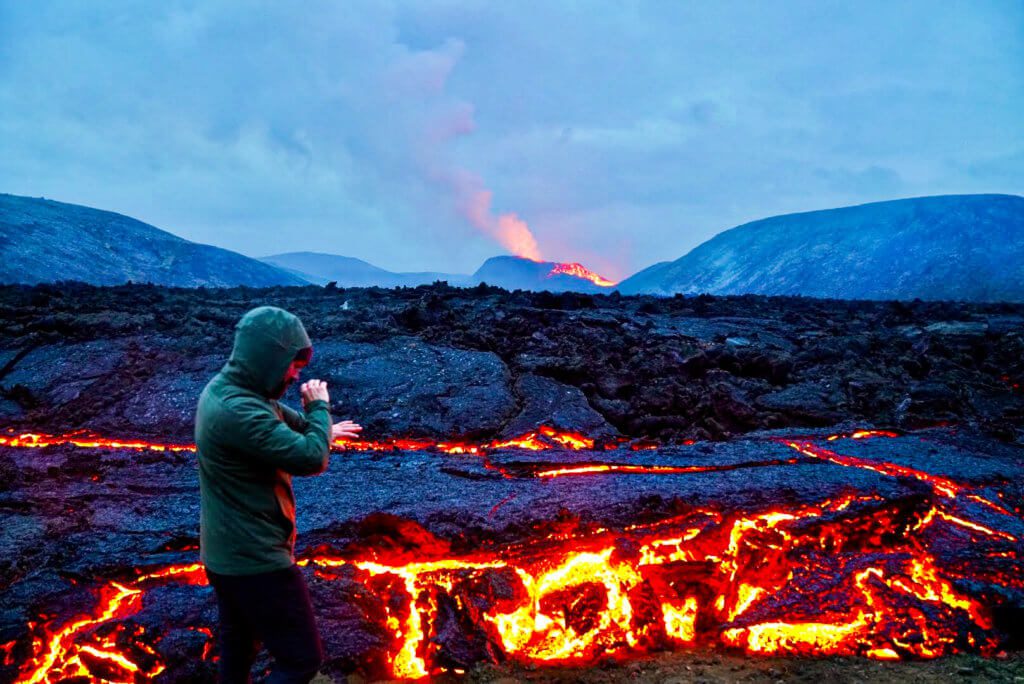
I went diving with an Israeli couple who had a much different experience visiting the Fagradalsfjall Volcano than I did. Their entire hike was rainy, foggy, and muddy. At times they got dangerously close to the lava flow and never even saw it until it was almost too late. If visibility is poor, please exercise extreme caution or consider delaying your visit until conditions improve.
If you venture down near the edge of the lava flow, the heat is intense. I’ve heard of people roasting marshmallows and hot dogs with the help of a long stick of some sort. It sounds cool, but I cannot vouch for the safety of it though.
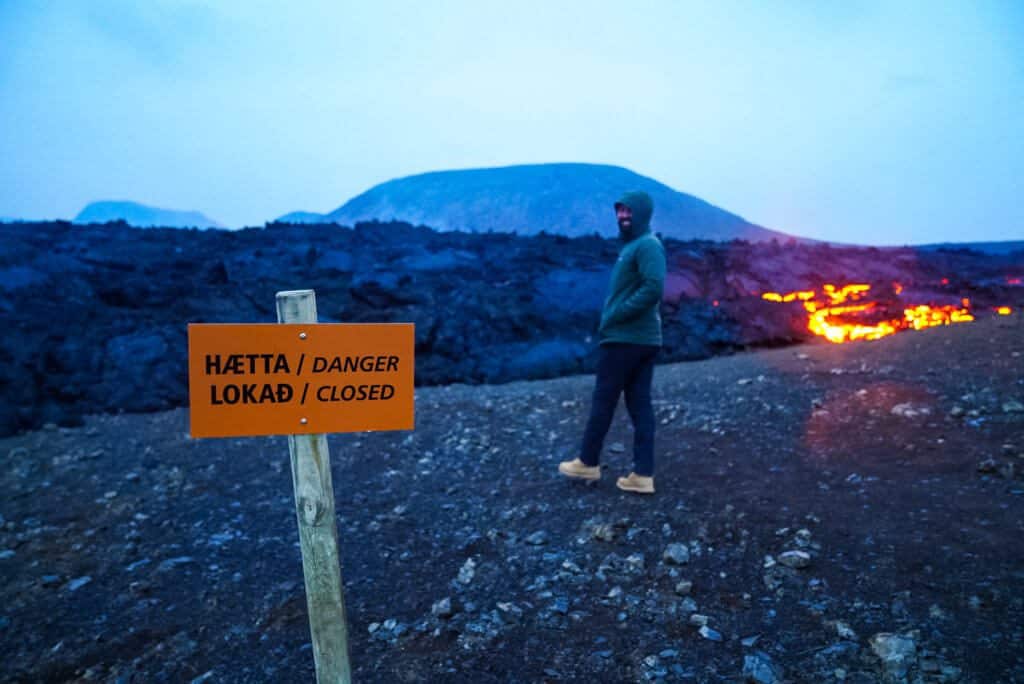
Is it Safe?
Obviously, there is some inherent risk when hiking to an active volcano. Overall, it’s a relatively safe venture. When visiting Fagradalsfjall volcano, there are teams of safety works constantly monitoring the conditions near the volcano throughout the day. They alert you when you are too close to the lava flow or if they detect an excess of toxic gases in the area. However, when I was visiting, I think the workers left at midnight.
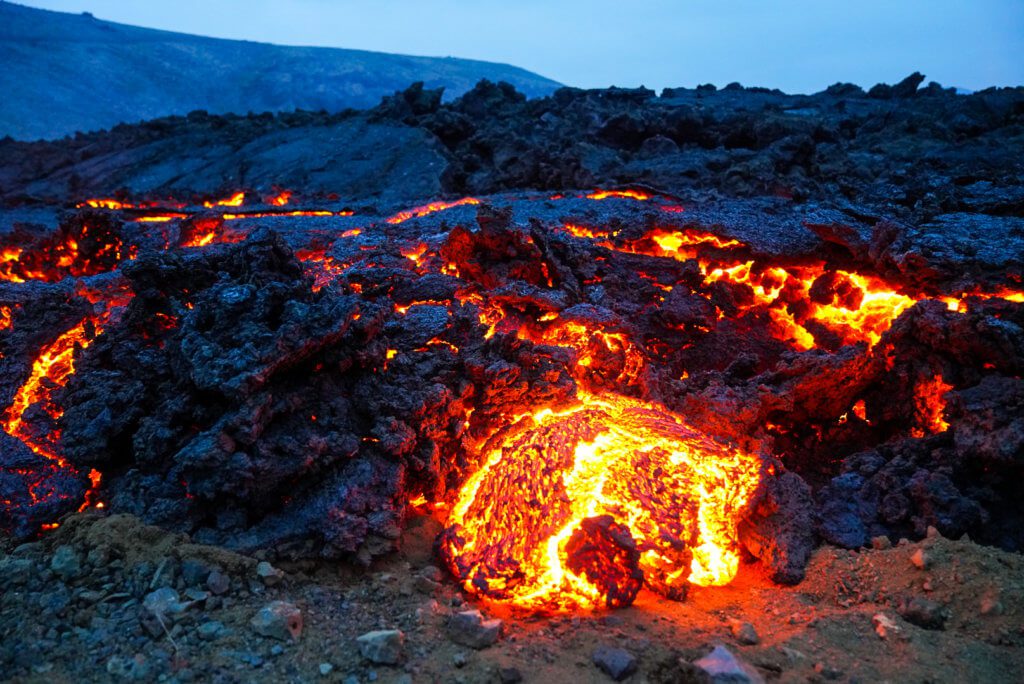
Getting To The Volcano
*Before visiting Fagradalsfjall Volcano for yourself, be sure to check conditions and necessary precautions online as circumstances are constantly changing.
Hire A Guide Or Go It Alone?
Your two options for visiting Fagradalsfjall volcano are to take a guided tour or to take the DIY approach. The benefits of hiring a guide are that you have someone to handle the transportation and logistics, the perspective and insight of a local Icelandic person with in-depth knowledge of volcanos in Iceland. Of course, it is also much safer to hike to an active volcano with other people than to do so alone.
I, however, went with option two and chose to visit the volcano on my own. It’s easy enough to get to, and I wanted the flexibility to explore the area and stay for as long as I wanted to. So, how exactly did I get to the volcano? Let me break it down.
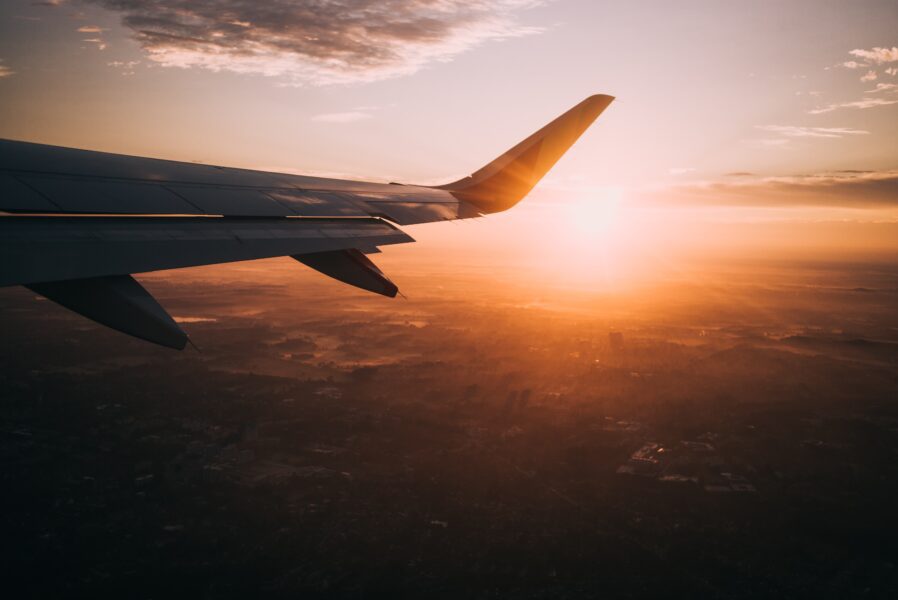
The Ultimate Checklist For Any International Trip
Make Sure You Have Everything You Need
The Drive
I rented a car when I first arrived in Iceland, so transportation to the volcano was easy. I Fagradalsfjall Volcano into google maps and saw the drive from Reykjavik was only about an hour long. The entire drive is on paved roads, so there’s it’s nice and easy. Upon arrival, a few different unpaved parking areas sit next to the main road. You pay 1,000kr or about $10 US through an app used throughout Iceland.
*Pro Tip: Like the weather, the road conditions in Iceland are always changing as well. Check online at road.is for the most up-to-date information on road conditions and closures.
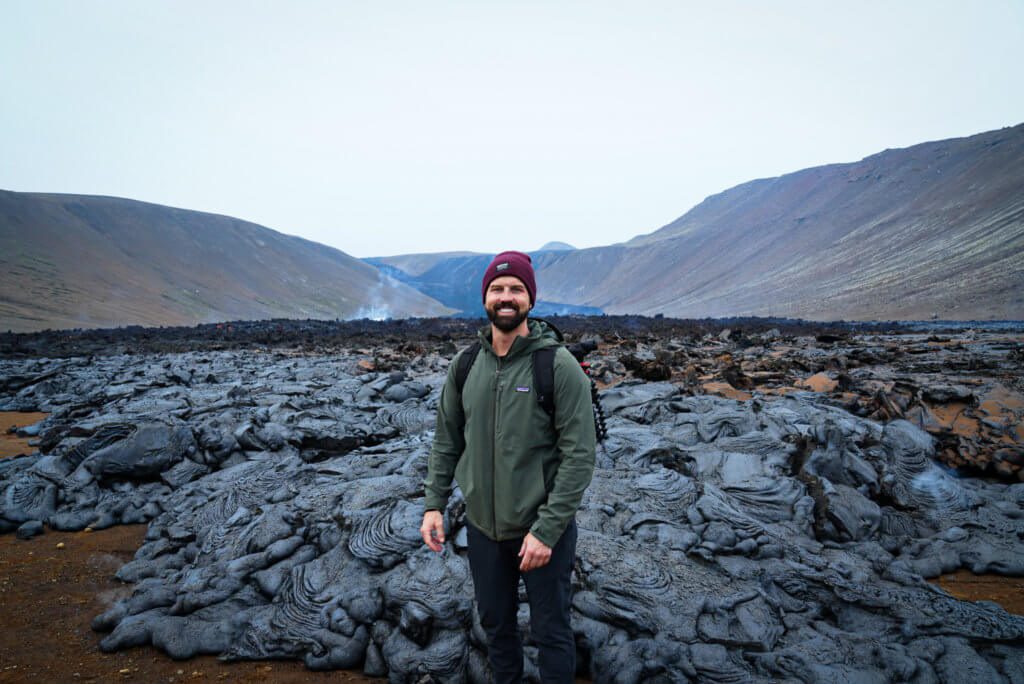
The Hike
Once parked, I followed the stream of people down a well-worn path in the direction of the thick smoke I saw rising high into the air. The first 15 minutes of the hike are relatively flat, ending in a downhill section that leads to a valley filled with cooled lava.
From there, your uphill journey begins. The following 40 minutes or so are a steady climb to a hilltop where you view the erupting volcano. Even though I did my best to keep a moderate, steady pace, I still began to sweat and had to shed a few layers. The weather in Iceland is famous for how quickly it can change, so be sure you come prepared.
5 Things You Need To Bring
If you find yourself visiting the Fagradalsfjall volcano, you’ll want to be sure you have everything you might need is critical if you are going to visit the volcano. I recommend bringing along a day pack with the following essentials:
1. Layers & Rain Gear
The weather changes quickly in Iceland. You can experience blue, sunny skies one minute and gale-force winds and rain the next. During my hike to the viewpoint, I had perfect weather and needed to remove my down puffer jacket and outer layer. By the time I started to leave, though, the rains and wind came. I added back my puffer jacket and rainproof shell, as well as insulated gloves and a warm beanie.
2. Food & Water
You’ll want to refuel after your hike to the top. At the very least, I recommend bring some fruit or protein bars and plenty of water. I carried a thermos filled with hot tea also. When the weather turned and the temperature dropped, I treated myself to the hot tea, and it was heavenly—just the boost I needed for my hike out.
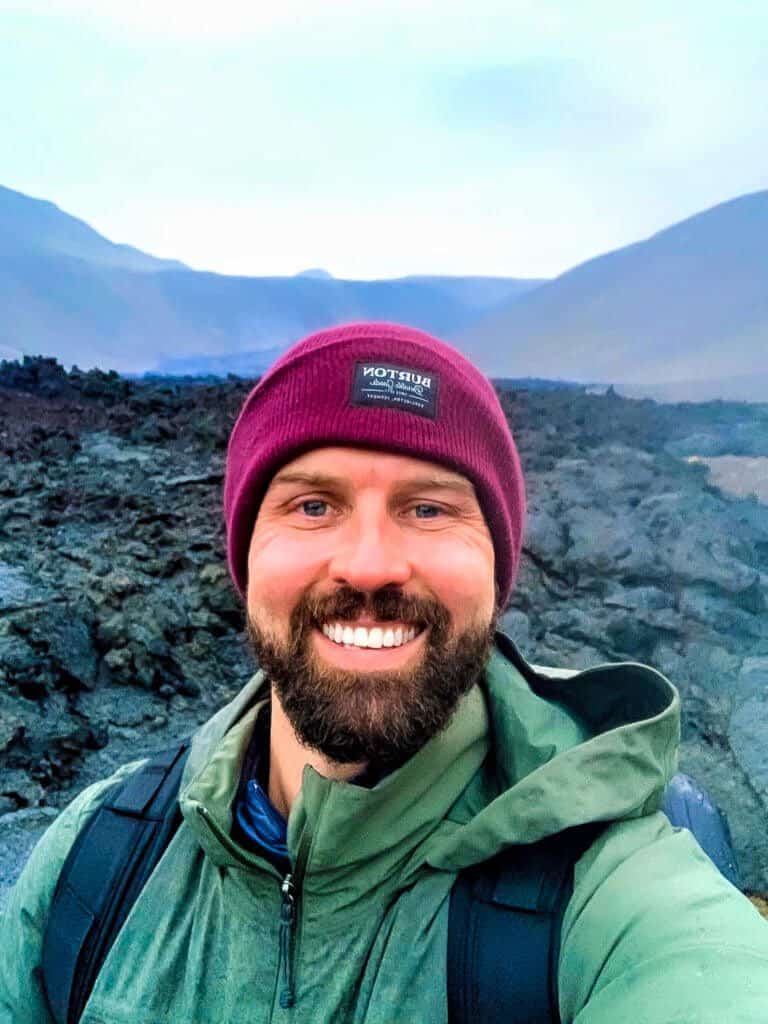
3. Your Phone
Ok, this one is obvious, but I have to say it anyway. You need to bring your phone with you for a few reasons. First, pictures and videos. If you don’t have another camera, you will still get amazing photos and videos with your smartphone.
Facetime and video chat. I Facetimed several close friends and family members to let them witness the eruptions with me! It allowed me to share the experience with people I’m close to, and everyone absolutely loved it! The best part was watching the excitement on their faces as the glowing lava began to spew!
Safety. It’s essential to keep your phone with you in case of an emergency. It’s comforting knowing that if you need help, it’s right in the palm of your hand.
Have a fully charged battery and bring an extra power bank with you. After all those photos, videos, and video chats, that charge will plummet in a hurry!
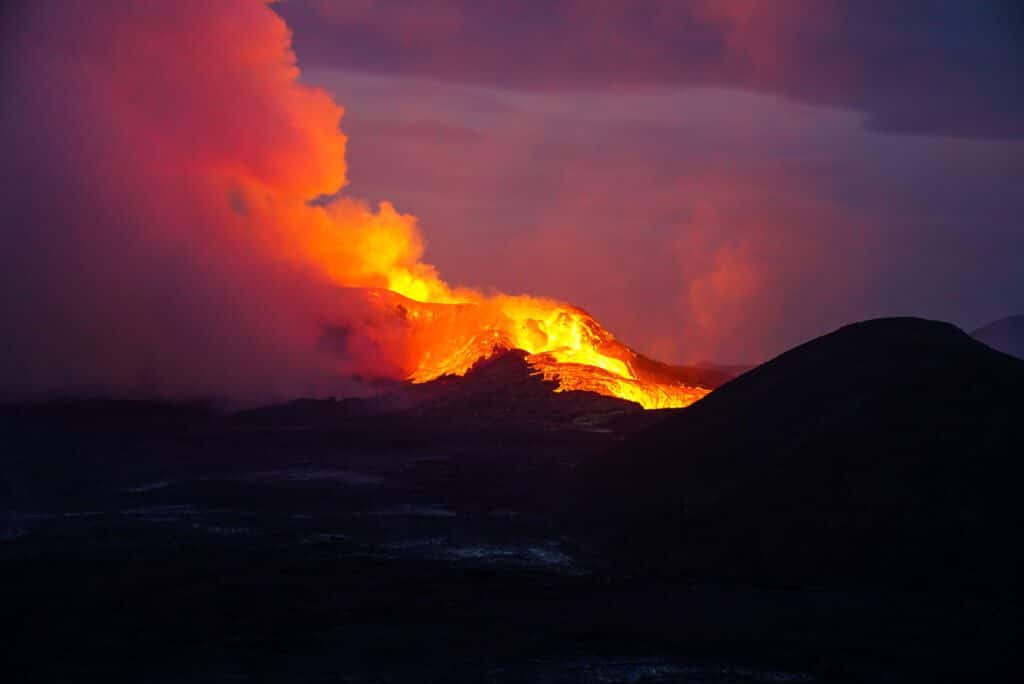
4. Camera Equipment
Visiting Fagradalsfjall Volcano and watching it erupt was easily one of the most incredible things I’ve ever witnessed. You will definitely want to capture that memory with as many great photos as you can get. Bring your camera, tripod, and accessories, along with a full battery and empty memory card. At the time of this post, drones are permitted when visiting Fagradalsfjall Volcano. This volcano takes no prisoners; fly your drone at your own risk.
5. Binoculars
As the volcano continues to erupt, the lava field continues to expand. This means that the longer you wait to visit Fagradalsfjall Volcano, the farther away from the cone you will have to be. Consider bringing a good pair of binoculars to see the lava spewing in high definition!
Was it worth it?
Fagradalsfjall Volcano was easy to get to and only cost me $10 in parking. The experience, however, was absolutely priceless. If you are currently planning a trip to Iceland, do not miss this volcano! If you aren’t currently planning a trip to Iceland, what are you waiting for? Drop what you’re doing and start planning today!
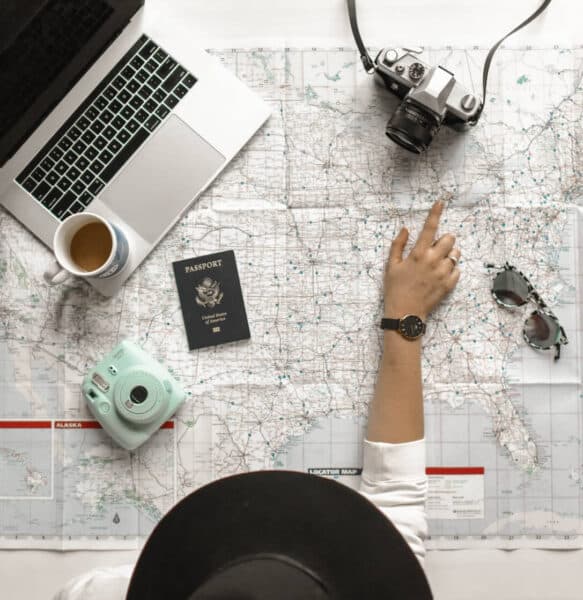
Pingback: Why I Quit My Job To Travel The World
Pingback: What Its Like Scuba Diving Between Two Continents
Pingback: The Truth About Visiting The Blue Lagoon & Everything You Need To Know